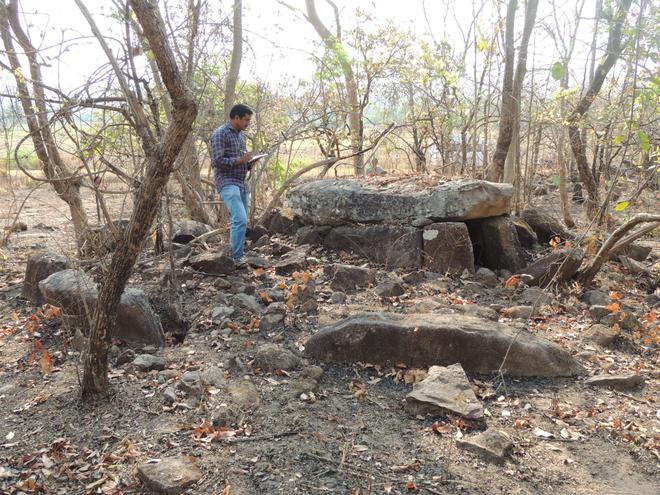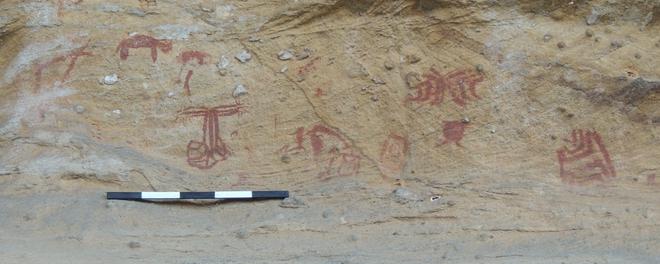A team of archaeologists claimed to have discovered a unique Iron Age megalithic site at Ooragutta near Bandala village in SS Tadvai mandal of Mulugu district, Telangana.
The site was discovered by a team comprising K.P. Rao, history professor of the University of Hyderabad, and Ch Praveen Raju, research scholar from Yogi Vemana University, Kadapa, Andhra Pradesh, in the forested area of the tribal-dominated district.

Though the exact number of monuments could not be counted in the dense forest and slopes of the hill, there appears to be more than 200 megalithic monuments, says Prof. Rao, an active field archaeologist, who teaches ancient history, field archaeology, and pre and proto historic culture related subjects.
“It is interesting to note that this site has new types of monuments, which have not come to light so far anywhere in other regions of India. Usually in this region, we find a type of megalithic monument known as ‘Dolmenoid Cists’. Most of the monuments in this region have squarish or rectangular shapes,” he said.
Contrary to this, the site discovered at this place (Ooragutta) has unique features. The side slabs are arranged with slabs following the shape of the cap-stone. Hence, each ‘dolmenoid cist’ has a unique shape as dictated by the cap-stone. These monuments can be dated around 1,000 BCE, he added.

Prof. Rao also said, “In Europe, such monuments are known as Passage Chambers. It is likely that this type of monuments have given rise to the more evolved type of squarish and rectangular monuments.”
The team also discovered two new rock art sites at Damaratogu in Gundala mandal of Bhadradri Kothagudem district.
The first site, known as ‘Devarlabanda Mula’, has only depictions of animals and no humans. Since no weapons or domestic animals are shown, it is believed that the paintings may go back to the mesolithic age, anywhere between 8000 – 3000 BCE.







